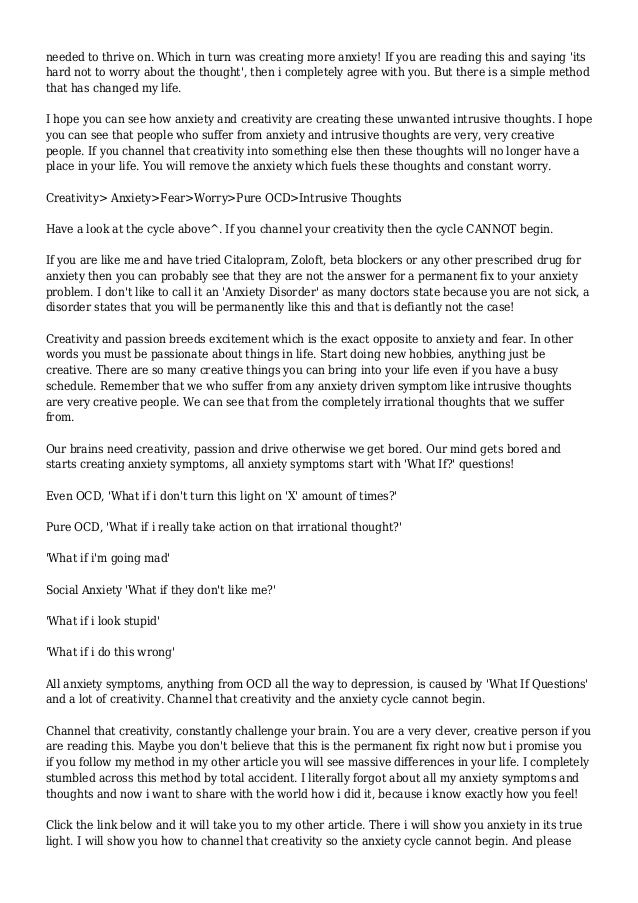

They tend to imagine the worst happening, and seek reassurance from parents that it won’t.ĭr. “What if a hurricane blows away our house?”

Kids with GAD worry about the “what if’s,” adds Dr. “There’s no area that they don’t worry about, but the typical areas of worry are usually around health of themselves or their family, money, and safety and stability.” “Kids with GAD are chronic worriers,” says Jerry Bubrick, PhD, a senior clinical psychologist at the Child Mind Institute. There doesn’t even necessarily have to be anything that triggers it, adds Dr. “Kids with generalized anxiety disorder worry about all the same things that other kids worry about,” says Emily Gerber, PhD, the senior director of the Anxiety Disorders Center at the Child Mind Institute’s San Francisco Bay Area clinic, “but they worry more often and more intensely.” children with GAD worry about a variety of everyday situations. Unlike with a phobia, which has a specific trigger - spiders, needles, dogs, airplanes, clowns, etc. It’s the most common type of anxiety disorder among children and teens. Generalized anxiety disorder (GAD) is characterized as constant worry about lots of different things that aren’t really threats and/or overreacting to minor threats. But kids who worry excessively about numerous things may have generalized anxiety disorder. Severe GAD may be treated with a combination of therapy and medication, usually an antidepressant called an SSRI.įor a lot of kids with anxiety, excessive worry is triggered by a specific situation, such as being away from their parents, public speaking, heights or a scary animal.
#GENERAL THOUGHTS ON ANXIETY HOW TO#
Parents also learn how to avoid enabling their child’s anxiety and instead support their overcoming it. An alternative is acceptance and commitment therapy (ACT), which teaches kids to acknowledge and accept the anxious thoughts they’re having and commit to moving forward despite them. Treatment for GAD includes cognitive behavior therapy (CBT), in which kids learn to recognize irrational thinking and replacing it with more logical, healthy ways of thinking. It’s important to get help for kids with GAD because all that worry can lead to depression, and it also leads, for teenagers, to substance use -drinking alcohol or smoking pot to ease their anxiety. They may have anxious stomachaches and headaches and spend a lot of time in the school nurse’s office. They may put enormous pressure on themselves to perform well - more than their teachers or parents - and may avoid doing things because they’re worried about not doing them well enough. Kids with GAD also tend to be perfectionists.

They may be irritable and have trouble sleeping. Kids with GAD tend to imagine the worst happening, and their anxiety may not be triggered by anything in particular. “What if a hurricane blows away our house?

Kids with GAD worry about everything, and it often takes the form of “what ifs”: They have what’s called generalized anxiety disorder or GAD. But some kids are anxious about many things. Most kinds of anxiety focus on a particular worry - fear of heights, separating from parents, speaking in public, things like germs or spiders.


 0 kommentar(er)
0 kommentar(er)
